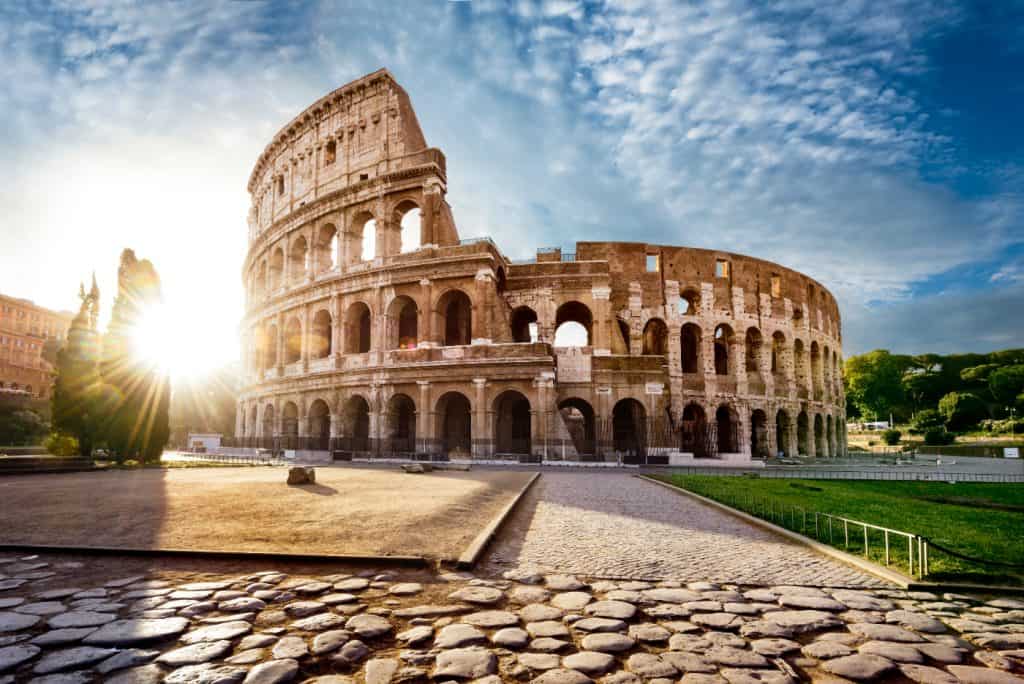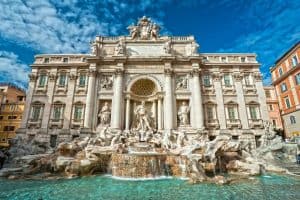- TRAVEL GUIDES
arrow_drop_down
- Canada
- United States
- Sunny Destinations
arrow_drop_down
- VIEW ALL
- BUCKET LIST
- ABOUT
- CONTACT
Tips on Visiting the Colosseum in Rome
- Italy
- Rome
-
Apr 30
- Share post

Table of Contents
Visiting the Colosseum
Deep in the heart of “The City of Eternity” lies the 2000-year-old symbol of Ancient Rome’s glory, the Colosseum. You can’t say you’ve truly explored Italy without diving into the mysterious history the Colosseum has woven deeply into its walls.
Back in ancient times, the Colosseum was known as the “Amphitheatrum Flavium” and was built by the Flavian Dynasty in 70 A.D. This massive ancient stone amphitheater was built for combat between gladiators and wild animals, often fighting to the death.
The Colosseum is simply a timeless, architectural masterpiece that is a testimony to mankind’s brilliance and craftsmanship.
It’s no surprise that the Colosseum is generally at the top of any travel itinerary when it comes to visiting Rome, drawing in over 7 million tourists every year.
What to Expect at the Colosseum
colosseum exterior
Where is the Colosseum Located?
Standing as a symbol of the great Roman Empire, the Colosseum is located in the historical center of Rome.
Notable ancient monuments in the area include Circo Maximus and the Roman Forum. Some of the other famous landmarks in Rome, such as the Trevi Fountain, the Spanish Steps and Pantheon are roughly a 20 to 30-minute walk away.
How Much Does the Colosseum Cost?
The best thing to do is to plan ahead and purchase your Colosseum ticket online. Small group tours cost about $40 USD and include stopping at the Colosseum, Palatine Hill, and Roman Forum.
Visiting During the Coronavirus Epidemic
The Colosseum officially opened to visitors on June 1st, 2020, exclusively from the “Valadier Entrance”.
For safety reasons there are several restrictions in place — all visitors will be screened and the site will only permit 600 people through each day (up to 20 people are allowed to enter every 15 minutes).
Best Time to Visit the Colosseum
rome colosseum & columns
The Colosseum is open year-round, with exception of January 1st, May 1st and December 25th. Opening hours are from 8:30 AM until 7 PM (or one hour before sunset).
If you want to avoid large crowds, try to visit the Colosseum during the low season which generally runs from November until February. Keep in mind that weekends are busier than weekdays and try to avoid any dates near a major holiday.
March till October is considered high season in Rome and visiting during the weekend or weekday won’t make a difference. The Colosseum gets busy from noon till 4 PM and the crowds will be unavoidable — be mindful of the summer heat too, as there is no shade or place to sit.
The best time of day to visit (regardless of the season) is early in the morning, around 8:30 AM. If that’s not an option for you, then the next best thing would be to arrive at the Colosseum 2 to 3 hours before closing (the sun sets earlier during the winter months which means the site will close earlier).
Things to Know Before You Visit
colosseum, rome, italy
Taking the bus or metro is the cheaper and better option
Taxis can be tricky with the prices — it’s not uncommon to discover that the taxi fare will fluctuate depending on the time of day and whether it’s the weekend. Also, the longer distance you travel, the more it’ll cost per mile (or km). If taking the taxi is your only option, make sure you negotiate your rates and to ask the driver to turn on the meter.
Always book your tickets in advance
The occupancy limit at the Colosseum is 3,000 people per day (currently 600 people due to the Coronavirus outbreak).
If you decide to visit last-minute, you’ll have to wait until all ticket-holders have gone in and this may mean hours of waiting. Do yourself a favor and book online!
Explore the Colosseum without a tour guide
Download an audio guide online and with good headphones, you’ll be able to enjoy the site on your own.
What to Bring & What to Wear
Arch of Constantine
You definitely won’t forget to bring your camera and phone, but there are few other things that may not cross your mind.
What to Wear
It’s important that you wear shoes that are comfortable, preferably sneakers or other flat shoes. The Colosseum and Forum are paved with uneven stones which can be slippery. There’s also a decent amount of climbing when exploring the upper levels of the Colosseum as well as the Palatine Hills.
A hat is also a must-have since there’s no place to hide under the blazing sun.
What to Bring
When visiting the Colosseum you will go through security screening with a metal detector. Big bags and backpacks are not allowed, and there will be no place for you to leave them.
Your personal belongings will be scanned, so it’s a good idea to have all metal objects and devices in one smaller bag — this will make the security process easier and faster.
The following items are not permitted inside the Colosseum: selfie sticks, tripods, large bags or luggage, sprays, knives, scissors, and glass bottles.
Remember to bring a reusable water bottle (water is refillable from the Colosseum’s fountains).
What to See at the Colosseum
inside the colosseum
Being the largest amphitheater ever built, you’re right to think that there is a lot to be seen and done at the Colosseum.
The Colosseum is organized into several main areas:
The Exterior
You can view and enjoy the exterior without a ticket.
The Arena Floor
The area where traditional battles occurred. You’ll be standing where the gladiators once heroically fought and from here, you’ll get a true sense of how massive the Colosseum really is!
The Hypogeum & Upper Tiers
The hypogeum is the underground level that is below the arena floor and was where all the slaves, wild animals, gladiators and prisoners were kept during the events. The upper tiers is where the seating is — you’ll enjoy the panoramic view of the arena as well as the entire Colosseum.
The Third Tier
The underground tunnels which cannot be accessed without booking a Colosseum Underground Tour. You’ll get to experience the soul of the Colosseum — learn and understand what went “behind the scenes” during gladiatorial combat.
The Roman Forum & Palatine Hill
A collection of ruins and historic buildings that was once the heart of Ancient Rome and a testimony of the city’s architecture. You’ll need to spare a few hours to explore these parts of the site which are typically included in the Colosseum tours.
How to Get to the Colosseum
colosseum interior
There are many ways you can get to the Colosseum and it would depend on your budget and pace:
- If you are located near Piazza Navona / Pantheon you don’t need to take any transportation, you can walk to the Colosseum in about 20 to 30 minutes.
- Take the Hop on Hop Off sightseeing bus service in Rome — 24, 48 or 72 hour tickets are available for purchase and the bus stops at many popular sites.
- Another option would be to take the Rome Metro (usually Line B) which will stop right across the street from the Colosseum.
- If you’re planning to buy the Rome Vatican Pass, the city’s public transportation system is included in the cost.
- There are also taxi services available throughout the city and you can easily flag them down in a pinch.
Rent a Car
Map of the Colosseum
Final Thoughts
The Colosseum is a historic landmark and considered one of the most popular tourist destinations in Italy; a once in a lifetime experience that should be enjoyed to the fullest.
We hope this guide helps in making your bucket list experience more enjoyable.
Do you have any insider tips to add? Let us know in the comments!






